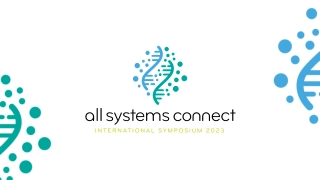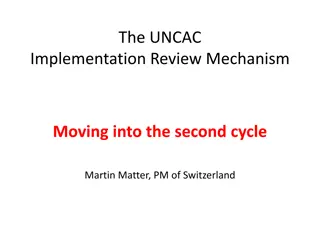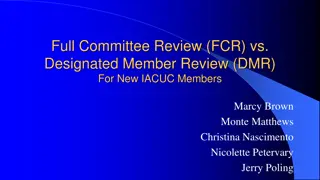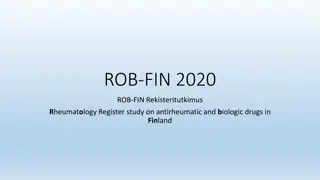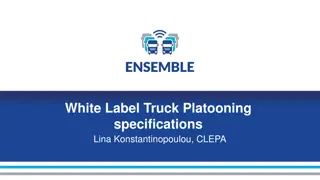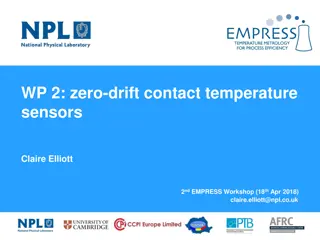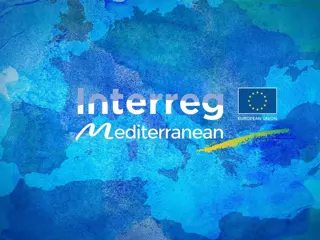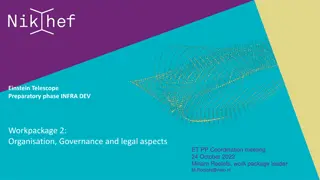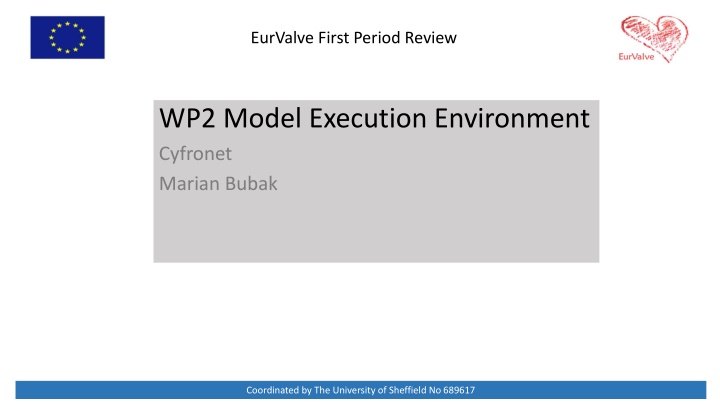
Innovative Model Execution Environment for Large-Scale Simulations
"Explore a cutting-edge Model Execution Environment (MEE) facilitating the development, deployment, and execution of large-scale simulations for research and clinical purposes. From research environment to Data Science System (DSS) integration, this advanced platform offers solutions for patient data processing, sensitivity analyses, and simulation pipelines. Dive into the realm of medical data classification, prospective and retrospective data handling, and the integration of high-performance computing infrastructure. Discover how the MEE, coordinated by The University of Sheffield, revolutionizes the way simulations are conducted in the medical field."
Download Presentation

Please find below an Image/Link to download the presentation.
The content on the website is provided AS IS for your information and personal use only. It may not be sold, licensed, or shared on other websites without obtaining consent from the author. If you encounter any issues during the download, it is possible that the publisher has removed the file from their server.
You are allowed to download the files provided on this website for personal or commercial use, subject to the condition that they are used lawfully. All files are the property of their respective owners.
The content on the website is provided AS IS for your information and personal use only. It may not be sold, licensed, or shared on other websites without obtaining consent from the author.
E N D
Presentation Transcript
EurValve First Period Review WP2 Model Execution Environment Cyfronet Marian Bubak Coordinated by The University of Sheffield No 689617
WP2 Summary WP Purpose WP2 elaborates and operates a flexible, easy to use environment for the development, deployment and execution of large scale simulations, required for learning process development and for sensitivity analyses (a Model Execution Environment ). Main Events WP2 is expected to complete its specification phase by Project Month 6 and begin gathering data by Project Month 9. The candidate release of WP2 tools is expected by Project Month 30. Main Events in this period An advanced prototype of the Model Execution Environment (v 0.7.0) has been completed and is ready to process patient pipelines, as demonstrated during the review meeting. Completed Objectives Users of the MEE are able to browse data, run patient pipelines and visualize results at each step of the process. A security system is in place and a selection of data processing tools is available. The MEE has been integrated with the high performance computing infrastructure at ACC Cyfronet AGH, enabling tasks to be run on the Prometheus supercomputer. Challenges and Solutions The main goal, i.e. being able to run a simulation for an input data set, has been completed, and the MEE provides full-fledged functionality in this regard. Additional data manipulation tools and presentation options are being integrated. Coordinated by The University of Sheffield No 689617
From Research Environment to DSS Clinical Computing Environment Research Computing Infrastructure Development of models for DSS Visualization Model Execution Environment Data Collection and Publication Suite Multiscale Real-time DSS Execution Environment Patient Data 0-D Model ROM 3-D Model Model A Images ROM Population data Security Model B System Data Source 2 Data Source 1 HPC Cluster Cloud Workstation Infrastructure Operations Provide elaborated models and data for DSS Coordinated by The University of Sheffield No 689617
Pipelines for ROM and sensitivity analysis Data and action flow consists of: full CFD simulations sensitivity analysis to acquire significant parameters parameter estimation based on patient data uncertainty quantification of various procedures The flow of CFD simulations and sensitivity analysis is part of clinical patient treatment Coordinated by The University of Sheffield No 689617
Medical data in MEE Data classification based on source retrospective (Clinical Examination, Patient Tables, Medication etc.) prospective (data generated in the course of medical trials) Types of data and unique handling requirements Files / BLOBs (Binary Large Object) large chunks (MB-GB range) of data (e.g. images) that do not need to be searchable and are to be stored in the File Store DB (Database) records relatively small (B-KB) tabular records (measurements, patient records) which must be quickly searchable and are to be stored in a database Mixed Data data composed of BLOBs and Metadata e.g. DICOMs needs to be decomposed by storing BLOB data in the File Store and Metadata + BLOB reference (URI) in the DB Basic operations on medical data Data aggregation from available medical sources done with the Data Publication Suite (DPS) for the retrospective data and the ArQ tool from STH for the prospective data Data de-identification and, optionally, separation/classification of BLOB and DB data done with the DPS and ArQ Data storage in File Store or DB Coordinated by The University of Sheffield No 689617
WP2: Partner roles Partner Cyfronet PM 47 Role Description Leading WP2, development of the Model Execution Environment, responsibility for integration with the data warehouse, and support to WP5 in its deployment within WP5 Ensuring the operation of the modelling analysis tools of WP3 with the infrastructure Work with STHFT on the introduction and support of the clinical data system USFD 5 DHZB 21 Ensuring the operation of the case-based reasoning through the infrastructure UR1-LTSI 1 Design and deployment of the data warehouse and the interface to the clinical systems STHFT 24 Coordinated by The University of Sheffield No 689617
WP2: Task summary Task UR1 STHFTDescription CYF USFD DHZB Construction of data warehouse and provision of data collection and publication suite Data hosting facilities, data collection Model Execution Environment Execution environment, interface to data warehouse and to modelling tools. Private workstation, private and public clouds, HPC Integrated security and data encryption Authentication, authorisation, data protection provided in collaboration with Task 2.1 Real-time multiscale visualisation Tools for real-time multiscale visualisation within a Web browser Platform quality assurance Assuring quality of service of the platform, including availability, responsiveness and support T2.1 2 2 15 0 16 T2.2 15 1 1 1 2 T2.3 10 1 2 0 2 T2.4 10 0 1 0 2 T2.5 10 1 2 0 2 Coordinated by The University of Sheffield No 689617
WP2 T2.1 Construction of Data Warehouse and Provision of Data Collection and Publication Suite T2.1 Construction of Data Warehouse and Provision of Data Collection and Publication Suite Achievement Access to structural data (databases) and binary data (imaging/processing results) is provided and integrated with the Model Execution Environment. Context Data access is essential for any processing to take place in the context of EurValve. Accordingly, a robust solution must be in place before simulation pipelines can be executed. Location This task is led by STHFT and DHZB, assisted by other partners notably Cyfronet, which is responsible for the File Store subsystem. Dependencies This task depends on access to medical data as provided by ArQ and TrialConnect, and it feeds into the data processing features developed in the context of WP2. It also requires dedicated storage resources for binary data. Importance This task is of fundamental importance for the data processing and presentation layers of the MEE software stack. Demonstration Querying medical datasets and visualizing simulation results stored in the EurValve Data Store is supported by the current version of the MEE. Both components can also feed data into computational tasks and store results. Plans Additional visualization and querying options are being developed Coordinated by The University of Sheffield No 689617
Basic features of the structured data store Exists as a collection of independent databases, one for each dataset required in the project, Clinical, Inferred, Computed etc. Datasets can be updated and queried individually by different groups of users. High-level virtual datasets can be configured so queries can be transparently federated across the underlying sources. Web based graphical query tools have been developed for data exploration. Web services deployed for low level data access. Command line tools developed for easy use in HPC environments. Higher level data aggregation services are now being delivered for example stacked queries which insert inferred values into empty fields in the clinical records before simulation. Coordinated by The University of Sheffield No 689617
Basic features of the File Store Deployment of a file repository compliant with the WebDav protocol, including search capabilities (RFC 5323) File Store component (browser) enabling web-based file browsing, downloads and uploads through the EurValve portal File Browser may be reused in dedicated portal views where the user can browse a specified sub-folder and perform a restricted set of operations Remote file system can be mounted on a local computer using an off-the-shelf WebDav client under Windows, MacOs or Linux File Store is integrated with the EurValve security solution; directory permissions can be granted to a user or to a group of users. All data is encrypted with a strong encryption mechanism (AES256). Coordinated by The University of Sheffield No 689617
Flow of Medical Data BLOB Data handled based on the confidentiality level: Step 1 (all levels) data is sent via encrypted channel to the service Step 2-3 (high) data encrypted and stored on disk Step 4-5 (high) data decrypted and retrieved Step A-B (lo) data stored directly to disk Step 6 (all) data sent back to the user Secure locally hosted service (1b) R E S T (2b) SQL DB Records: Step 1b data is saved via an encrypted channel to the DB service in a secured location Step 2b data is retrieved from the service via an encrypted channel Database access At present, all EurValve data is encrypted; however steps A and B could also proceed in an unencrypted mode (if required for performance reasons). API Application Programming Interface BLOB Binary Large Object REST REpresentational State Transfer Coordinated by The University of Sheffield No 689617
WP2 T2.2 Model Execution Environment T2.2 Model Execution Environment Achievement A fully functional release of the Model Execution Environment is available and actively used to support medical data processing in the context of various simulation pipelines. Context The MEE is where EurValve computational research takes place. Its goal is to produce datasets suitable for the EurValve Decision Support Systems, and to provide researchers with tools to access and process data. Location This task is led by Cyfronet. Dependencies MEE depends on access to data storage and computing infrastructures (including HPC and Cloud resources), and it also integrates data processing algorithms produced in WP3. Importance This task facilitates all long-term (i.e. non-runtime) data processing which takes place in EurValve. Demonstration All features of the MEE suite are in place, including authentication/authorization, policy management, access to data, access to computations and visualization of results. Plans The MEE is currently being extended with additional types of processing pipelines. Validation of results against retrospective patient data is in development. Coordinated by The University of Sheffield No 689617
Functionality of Model Execution Environment Reproducibility, versioning, documentation of the pipeline Automation of the simulation pipeline with human in the loop for: new models, new versions of models, new users Data preservation Basic provenance features Helpful visualization of simulation flow and obtained results Generation of some components of publications Portability Coordinated by The University of Sheffield No 689617
Model Execution Environment - structure Researcher Workstation The MEE can be interfaced from a dedicated GUI (the EurValve Portal), through a RESTful API or through a comman-line interface, depending on the researcher s preferences. Computational tasks can be run on HPC resources or in a cloud environment, as appropriate. A uniform security layer is provided. User Interfaces Script API Command Line Interface (CLI) Web UI Model Execution Environment Shared security REST REST REST Data collection suite Rimrock Atmosphere Model Repository Model 1 Model 3 Model 2 Metadata WebDAV API Access Policy Management Clouds HPC Clusters API Application Programming Interface REST Representational state transfer Rimrock service used to submit jobs to HPC cluster Atmosphere provides access to cloud resources git a distributed revision control system WebDAV API Mounting File Store exposing a WebDAV endpoint Coordinated by The University of Sheffield No 689617
Notable features of the MEE 1. Pipeline execution management: organizes set of models into a single sequential execution pipeline with files as the main data exchange channel Model development organization through structuralization Retention of execution and development history 2. Computation execution diff: an adequate tool for model developers to compare two different model executions, revealing any changes along with their impact on results Dedicated comparison software for specific types of results Easier problem detection and manual validation 3. Mounting File Store under Windows and Linux No extra dependencies needed under Windows EurValve portal account required Access to EurValve file resources with native Windows and Linux clients Mounting EurValve file resources to be used by other services Coordinated by The University of Sheffield No 689617
Implementation of MEE Model Execution Environment: Patient case pipeline integrated with File Store and Prometheus supercomputer File Store for data management Cloud resources based on Atmosphere cloud platform Data sets Structural access to patient databases Query interfaces for real, simulated and inferred data Security configuration Service management for every service dedicated set of policy rules can be defined User Groups can be used to define security constraints REST API Creating a new user session as a result, new JWT (JSON Web Token) tokens are generated for credential delegation PDP Policy Decision Point: check if user has access to concrete resource Resource policies add/remove/edit service security policies Coordinated by The University of Sheffield No 689617
WP2 T2.3 Integrated security and data encryption T2.3 Integrated security and data encryption Achievement A comprehensive security solution is in place, protecting all features of the Model Execution Environment and EurValve data repositories. Context All access to EurValve data requires proper authentication and authorization, and the MEE must implement mechanisms by which access policies can be defined and managed. Location This task is led by Cyfronet with contributions from STHFT. Dependencies No internal dependencies exist, although given the fact that EurValve computations are run on the Prometheus supercomputer at ACC Cyfronet AGH, the EurValve security solution must be (and has been) integrated with existing security mechanisms governing access to Prometheus. Importance The importance of secure access to data particularly medical data is self-evident. Demonstration Authentication, authorization, policy management and integration with HPC security components at Cyfronet are all available for demonstration. Plans More fine-grained security policies for the EurValve File Store are contemplated, along with access trace mechanisms. Coordinated by The University of Sheffield No 689617
Integrated Security Framework and its use Step 1-2 (optional): Users authenticate themselves with the selected identity provider (hosted by the project or an external trusted IdP) and obtain a secure token which can then be used to authenticate requests in MEE Step 3-4: User requests JWT token from the Portal, based on IdP or local authentication Step 5 User sends a request to a service (token attached) Step 6-7 Service PEP validates token and permissions against the PDP (authorization) Step 8 service replies with data or error (access denied) Optional interaction by the Service Owner: Step A-B Service Owner may modify policies for the PDP via: the Portal GUI: global and local policies can be defined API (e.g. from within a Service): local policies only IdP Identity Provider PDP Policy Decision Point JWT JSON Web Token PEP Policy Enforcement Point Coordinated by The University of Sheffield No 689617
Registration of a new service To secure a service its owner first needs to register it in the Portal/PDP Step 1-2: Service Owner logs into the Portal, creates the Service and a set of Global Policies, and obtains a Service Token Step 3: Service Owner configures the Service PEP to interact with the PDP (incl. setting the service token). A standard PEP for Web-based Services is provided by the Cyfronet team. Custom PEPs may be developed using the provided API. The Service may use its token to: query the PDP for user access modify Local Policies for fine-grained access to the Service Coordinated by The University of Sheffield No 689617
File Store - multi policy approach Access policies are attached to different nodes according to user sharing policies. Private spaces can be created for individual users and groups. Coordinated by The University of Sheffield No 689617
WP2 T2.4 Real-time multiscale visualization T2.4 Real-time multiscale visualization Achievement A Web-based visualization feature has been built into the MEE, enabling the output of simulation pipelines to be directly visualized and compared. Context This is an add-on feature which augments simulation pipelines provided by the MEE. Location This task is led by Cyfronet with contributions from STHFT. Dependencies Visualization tools depend on integration with data storage components (particularly the EurValve File Store) and on integration with EurValve security mechanisms. Importance Being able to directly visualize the output of simulations is a useful feature for platform users. Demonstration Visualization plugins for various types of data elements are available for use. Plans More visualization options for popular medical imaging formats, as required by MEE users. Coordinated by The University of Sheffield No 689617
Visualization module The File Store component has been extended with a Data Extractor Registry with code defining how to extract relevant visualization data from a given file Data Extractors can be associated with given file extensions, particular folders and viewers The web-based File Store Browser uses registered extractors to fetch visualization data and initialize dedicated viewers if given file formats have been associated with any data extractors Any new data written to the File Store updates the viewers immediately Coordinated by The University of Sheffield No 689617
WP2 T2.5 Platform quality assurance T2.5 Platform quality assurance Achievement A software development and release timeline has been agreed upon, along with a list of tools and mechanisms applicable in the software development process. Context As WP2 produces a large quantity of software, the goal of this task is to ensure that such software is developed in a manner consistent with best practices in software development. Location This task is led by Cyfronet with contributions from STHFT. Dependencies This task does not, by itself, depend on other tasks or work packages of EurValve. Importance Proper validation, unit/integration testing and code reviews are important in any major software development project, and EurValve is no exception. Demonstration While not part of the clinical demo, we are ready to demonstrate the tools we used in the software development process (upon request). Plans We intend to clearly establish channels by which the MEE can be extended with additional features, and provide guidelines for developers of such features (e.g. additional pipeline steps). Coordinated by The University of Sheffield No 689617
CASE tools in use Gitlab RuboCop Popular GIT project repository (can be deployed locally) Provides change tracking, ticketing and collaborative development tools Supports automatic testing and validation of submitted code Code quality review tool Detect style violations and suggests improvements Supports modern versions of Ruby and JRuby Integrated with Gitlab; dispatches notifications by e-mail Gitlab CI Brakeman Continuous Integration tool supported by Gitlab Can automatically run software build specs in various configurations Can quickly detect and pinpoint integration problems Rails security scanner Statically analyses Ruby on Rails code to discover security issues Checks app config for consistency with RoR best practices Easy to set up, can be run at any stage of development Coordinated by The University of Sheffield No 689617
Software release process A new version of the Model Execution Environemnt is released every 2-3 months (we are currently using version 0.7.0). We use Gitlab as the project code repository. Issues are tracked and pull requests processed by the Cyfronet team. A code review is performed for each pull request, and a number of automatic CASE tools are in place to ensure consistency and quality of submitted code. Coordinated by The University of Sheffield No 689617
Issue tracking and pull requests New code is merged only after passing through a formal review process. Unit tests and static code analyzers are run automatically. https://gitlab.com/eurvalve /vapor is the MEE project url on Gitlab. Feature requests and bug reports may be submitted by all registered users. Coordinated by The University of Sheffield No 689617
MEE extensibility support for additional computational modules Additional modules can be implemented: As applications deployed on the Prometheus supercomputer As external services communicating with the platform via its REST interfaces As virtual machines deployable directly in the Cyfronet cloud via the Atmosphere extension of the MEE Encapsulating pipeline steps as HPC tasks: Scripts are run on the Prometheus supercomputer via the Rimrock extension Files uploaded to the FileStore (e.g. using MEE GUIs) can be accessed on Prometheus nodes via curl, leveraging the WebDAV interface provided by FileStore Any result files can also be uploaded directly to FileStore from the Prometheus computational nodes External tools can be used to monitor job completion status e.g. by periodically scanning FileStore content Coordinated by The University of Sheffield No 689617
Model Execution Environment usage The following slides will present: Features provided by existing MEE components Accessing the MEE via its RESTful API Security management interfaces built into the MEE Access to cloud-based resources and application components Coordinated by The University of Sheffield No 689617
Generic MEE tools Cloud resources Based on Atmosphere cloud platform Can start/stop/suspend virtual machine on cloud infrastructure Can save running existing machine as template (Future) can share templates with other users File Store Basic file storage for the project Ability to create new directories and upload/download files Can share directories with other users or groups of users Can be mounted locally using WebDav clients The File Browser GUI can also be embedded in other views Coordinated by The University of Sheffield No 689617
MEE functionality via REST API Generate user JWT Token User (or other service) can retrieve new JWT token by passing username and password JWT token can be used for user credential delegations by external EurValve services PDP API Check if user has right to access a specific resource Resource policy management Create/edit/delete local policies by external EurValve service on user behalf Currently integrated with File Store Initial ArQ integration tests underway Coordinated by The University of Sheffield No 689617
MEE security management UIs Services Basic security unit where dedicated security constraints can be defined Two types of security policies: Global can be defined only by service owner Local can be created by the service on the user s behalf Groups Group users Dedicated portal groups: Admin Supervisor users who can approve other users in the portal Generic groups: Everyone can create a group Groups can be used to define security constraints Coordinated by The University of Sheffield No 689617
MEE - cloud access via Atmosphere Secure RESTful API (Cloud Facade) Atmosphere host Atmosphere Core Communication with underlying computational clouds Launching and monitoring service instances Billing and accounting Logging and administrative services Atmosphere Registry (AIR) user accounts available cloud sites services and templates Access to cloud resources The Atmosphere extension provides access to cloud resources in the EurValve MEE Applications can be developed as virtual machines, saved as templates and instantiated in the cloud The extension is available directly in the MEE GUI and through a dedicated API Atmosphere is integrated with EurValve authentication and authorization mechanisms Coordinated by The University of Sheffield No 689617
The Patient Case Pipeline 1. Segmentation to start this calculation, a zip archive with a dedicated structure needs to be created and transferred into the OwnCloud input directory. Next, the output directory needs to be monitored for computation output. 2. Reduced Order Model analysis based on the results of the segmentation step, a ROM simulation is executed and its results uploaded to the File Store. 3. Parameter Optimization a technical step which prepares suitable parameters for the 0D model sequence 4. 0D model sequence runs four versions of the 0D model analysis for various input datasets 5. Uncertainty Quantification Matlab script which can include the 0D Heart Model. It will be executed on the Prometheus supercomputer, where input files will be transferred automatically from the File Store. Results are transferred back from Prometheus to the File Store. 6. Output visualization produces actionable visualization of the 0D model output data based on File Store contents. Patient Case Pipeline high-level building blocks: File-driven computation (such as Segmentation) use case: upload file to remote input directory, monitor remote output directory for results Scripts started on Prometheus supercomputer use case: transfer script and input files from File Store to the cluster, run job, monitor job status, once the job has completed transfer results from the cluster to File Store (examples: 0D Heart Model, Uncertainty Quantification, CFD simulation) Coordinated by The University of Sheffield No 689617
WP2 deliverables Deliverable Month Title D2.1 D2.2 D2.3 D2.4 D2.5 3 4 8 15 30 Data requirements (STH) Infrastructure design recommendations (Cyfronet) Data workshop (DHZB) Infrastructure beta release (Cyfronet) Infrastructure candidate release (Cyfronet) Coordinated by The University of Sheffield No 689617
Publications and presentations 1) Piotr Nowakowski, applications in the cloud with the Atmosphere platform lessons learned, Virtual Physiological Human 2016 Conference, 26-28 September 2016, Amsterdam, NL Marian Bubak, Tomasz Barty ski, Daniel Har lak, Marek Kasztelnik, Maciej Malawski, Jan Meizner: VPH 2) M. Bubak, T. Bartynski, T. Gubala, D. Harezlak, M. Kasztelnik, M. Malawski, J. Meizner, P. Nowakowski: Towards Model Execution Environment for Investigation of Heart Valve Diseases, CGW Workshop 2016, 24-26 October 2016, Krakow, Poland 3) Marian Bubak, Daniel Har lak, Steven Wood, Tomasz Barty ski, Tomasz Gubala, Marek Kasztelnik, Maciej Malawski, Jan Meizner, Piotr Nowakowski: Data Management System for Investigation of Heart Valve Diseases, Workshop on Cloud Services for Synchronisation and Sharing, Amsterdam 29.01-2.02.2017, https://cs3.surfsara.nl/ 4) M. Kasztelnik, E. Coto, M. Bubak, M. Malawski, P. Nowakowski, J. Arenas, A. Saglimbeni, D. Testi, A.F. Frangi: Support for Taverna Workflows in the VPH-Share Cloud Platform, Computer Methods and Programs in Biomedicine, 146, July 2017, 37 46 5) P. Nowakowski, M. Bubak, T. Barty ski, T. Guba a, D. Har lak, M. Kasztelnik, M. Malawski, J. Meizner: Cloud computing infrastructure for the VPH community, Journal of Computational Science, Available online 21 June 2017 For more information see the DICE website at http://dice.cyfronet.pl or our Github profile at http://dice-cyfronet.github.io/ Coordinated by The University of Sheffield No 689617
MEE services at Cyfronet EurValve Project Website at Cyfronet AGH URL: http://dice.cyfronet.pl/projects/details/EurValve EurValve Portal URL: https://valve.cyfronet.pl Registration at: https://valve.cyfronet.pl/users/sign_up EurValve File Store URL (docs): https://files.valve.cyfronet.pl WebDAV endpoint (portal account required): https://files.valve.cyfronet.pl/webdav Coordinated by The University of Sheffield No 689617
Recorded demos of MEE Logging in to EurValve and PLGrid systems https://youtu.be/4I907aAOCvU File Store Browser https://youtu.be/-6fXG0am6iE Distributed Cloud File Store https://youtu.be/FTF-QaI5ZZQ Services, security, restricted access https://youtu.be/-6fXG0am6iE Cloud Resource Access https://youtu.be/A4wkxFCRLak Patient case https://youtu.be/SIwpxdoQYWw (patient case) https://youtu.be/j0Nu-E-0elE (pipeline diff) Integration of computational services https://youtu.be/SIwpxdoQYWw Coordinated by The University of Sheffield No 689617
Plans for the second phase 1. Further improvement of the MEE based on user feedback 2. Implementation of computation quality validation against retrospective patient data in order to compare pipeline results with retrospective patient data measured in vivo following intervention 3. Extension of the patient case scenario by: integrating additional sources of user data (e.g. enabling additional user parameters used by models to be retrieved from the Data Store) adding additional computational facilities delivered by project partners 4. Implementation of additional automation features for existing pipelines, enabling fine- grained control over the configuration and execution of individual pipeline steps in the context of specific patient data. 5. Development of advanced accounting mechanisms: logging events, such as data access or attempts to do so, with appropriate metadata analysis of events to detect anomalies (such as suspected access from new IP/location, device etc.) to potentially alert administrators, data owners, users etc. about suspicious activities. Coordinated by The University of Sheffield No 689617


